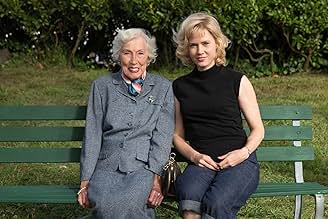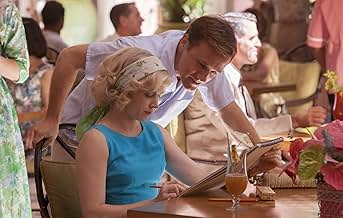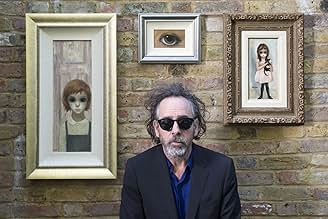Un drame sur l'artiste Margaret Keane, son succès phénoménal dans les années 1950 et les difficultés juridiques qu'elle a connues par la suite avec son mari, qui s'est attribué la paternité ... Tout lireUn drame sur l'artiste Margaret Keane, son succès phénoménal dans les années 1950 et les difficultés juridiques qu'elle a connues par la suite avec son mari, qui s'est attribué la paternité de ses oeuvres dans les années 1960.Un drame sur l'artiste Margaret Keane, son succès phénoménal dans les années 1950 et les difficultés juridiques qu'elle a connues par la suite avec son mari, qui s'est attribué la paternité de ses oeuvres dans les années 1960.
- Nominé pour le prix 2 BAFTA Awards
- 3 victoires et 18 nominations au total
- 2nd Olivetti Girl
- (as Emily Bruhn)
Histoire
Le saviez-vous
- AnecdotesMargaret Keane: Reading a book on a park bench behind Margaret and Walter, when they paint in front of the San Francisco Palace of Fine Arts. The end-credit photo of her sitting with Amy Adams was taken when this scene was filmed.
- Gaffes"Tomorrow Forever," the UNICEF painting Margaret Keane painted for the 1964 Worlds Fair, was never actually mounted in the Hall of Education. Robert Moses, who had control over everything that was included in the fair, hated it. Once New York Times critic John Canaday trashed it after seeing a photograph of it, Moses had it thrown into the garbage.
- Citations
Ruben: What's that with the big crazy eyes?
Walter Keane: Oh. Well, I believe that you can see things in the eyes. The eyes are the window to the soul.
This film is a biopic of 1950s novelty pop artist Margaret Keane (formerly Ulbrich, nee Hawkins). She developed a series of haunting acrylic paintings of kids with big dark round eyes. Walter Keane, her rascal salesman of a husband, took advantage of the rising popularity of her paintings. He claimed and mass-marketed them as his own.
Meanwhile, timid Margaret was forced to conform to his web of lies. She was locked in her workroom in their home to paint even more Big Eyes, away from the prying eyes of the public, and even her own daughter. Will Margaret be able to break free from the prison she has trapped herself into?
Amy Adams quietly carried this film capably on her shoulders. There was nothing funny about what she had to do here as Margaret. Her character was the victim of a most cruel crime. Her husband stole not only her art, but also her confidence, and her very freedom. Adams played a weak character, but as an actress, Adams was anything but. With her wise underplaying, Adams successfully won our empathy and compassion for her difficult plight.
Christoph Waltz, on the other hand, was over-the-top, one-dimensional, practically cartoonish, as the manipulative con-man Walter. From his very first scene, you already knew this smooth-talking guy was up to no good. Up to his very last scene in that courtroom, Waltz's Walter was a manic caricature, never really coming across as a real person at all. This may well Tim Burton's direction in play, as this character Walter was the source of most of this film's black humor. Waltz's fiery interaction with Terence Stamp's harsh NY Times art critic character is most memorable as well.
This film's narrative was simple and straightforward. Yet because of Amy Adams' riveting and heart-rending performance, we will be held until the compelling end. The technical aspects of the film, particularly the pastel color palette of the photography, as well as the period production design, costumes and makeup, all contribute to the overall charming look and nostalgic feel of the film as a whole. 7/10.
- 3xHCCH
- 2 mars 2015
- Lien permanent
Meilleurs choix
- How long is Big Eyes?Propulsé par Alexa
Détails
Box-office
- Budget
- 10 000 000 $ US (estimation)
- Brut – États-Unis et Canada
- 14 482 031 $ US
- Fin de semaine d'ouverture – États-Unis et Canada
- 3 001 738 $ US
- 28 déc. 2014
- Brut – à l'échelle mondiale
- 29 261 617 $ US
- Durée1 heure 46 minutes
- Couleur
- Mixage
- Rapport de forme
- 1.85 : 1
Contribuer à cette page












































